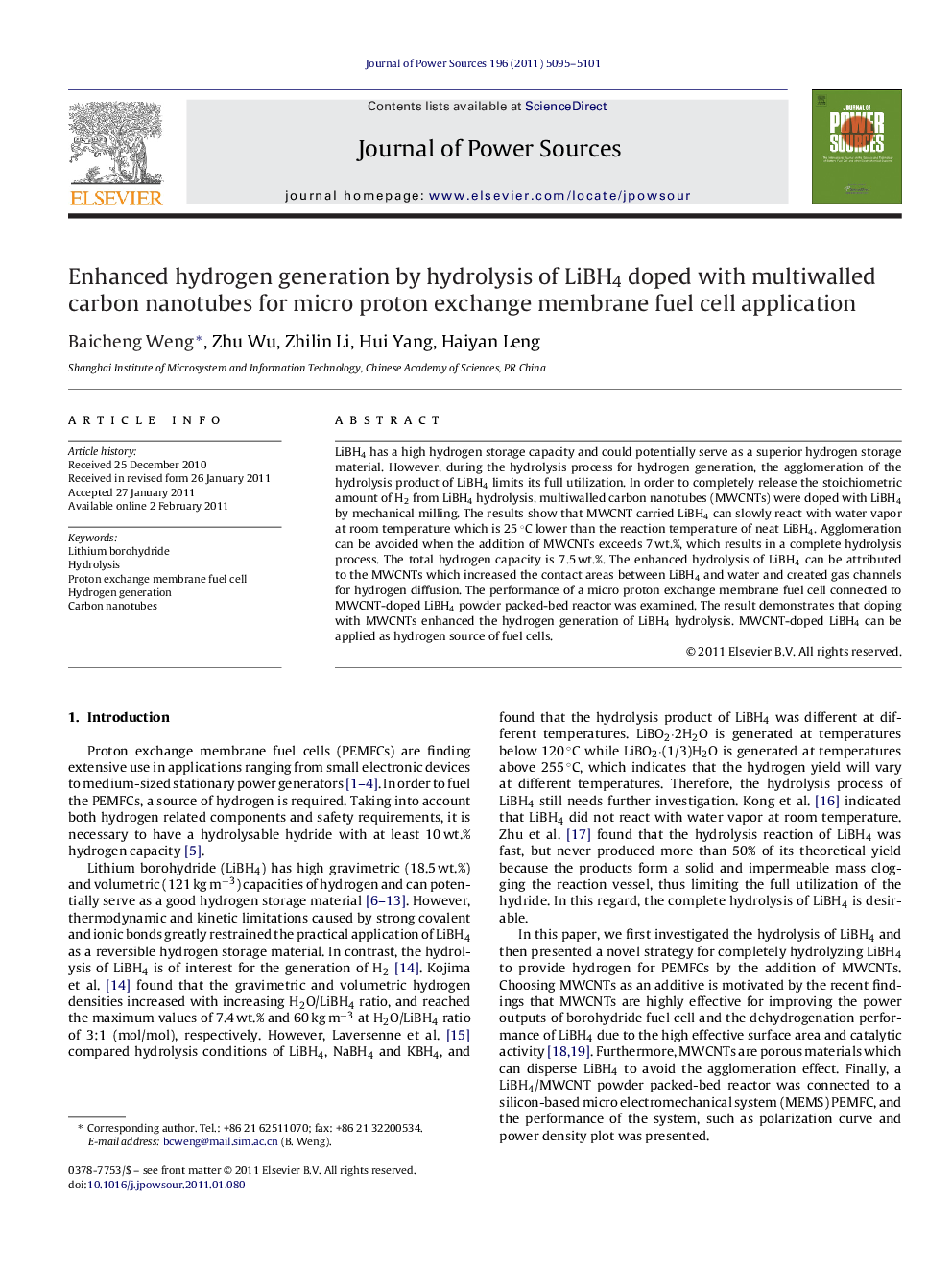| Article ID | Journal | Published Year | Pages | File Type |
|---|---|---|---|---|
| 1284781 | Journal of Power Sources | 2011 | 7 Pages |
LiBH4 has a high hydrogen storage capacity and could potentially serve as a superior hydrogen storage material. However, during the hydrolysis process for hydrogen generation, the agglomeration of the hydrolysis product of LiBH4 limits its full utilization. In order to completely release the stoichiometric amount of H2 from LiBH4 hydrolysis, multiwalled carbon nanotubes (MWCNTs) were doped with LiBH4 by mechanical milling. The results show that MWCNT carried LiBH4 can slowly react with water vapor at room temperature which is 25 °C lower than the reaction temperature of neat LiBH4. Agglomeration can be avoided when the addition of MWCNTs exceeds 7 wt.%, which results in a complete hydrolysis process. The total hydrogen capacity is 7.5 wt.%. The enhanced hydrolysis of LiBH4 can be attributed to the MWCNTs which increased the contact areas between LiBH4 and water and created gas channels for hydrogen diffusion. The performance of a micro proton exchange membrane fuel cell connected to MWCNT-doped LiBH4 powder packed-bed reactor was examined. The result demonstrates that doping with MWCNTs enhanced the hydrogen generation of LiBH4 hydrolysis. MWCNT-doped LiBH4 can be applied as hydrogen source of fuel cells.
Research highlights► Theoretical amount of H2 released from LiBH4 hydrolysis by the addition of MWCNTs. ► Agglomeration of LiBH4 is avoided by the addition of MWCNTs. ► LiBH4/MWCNTs can react with water vapor even at room temperature. ► A fuel cell derived by hydrolyzed LiBH4/MWCNTs can stably run for more than 20 h.
